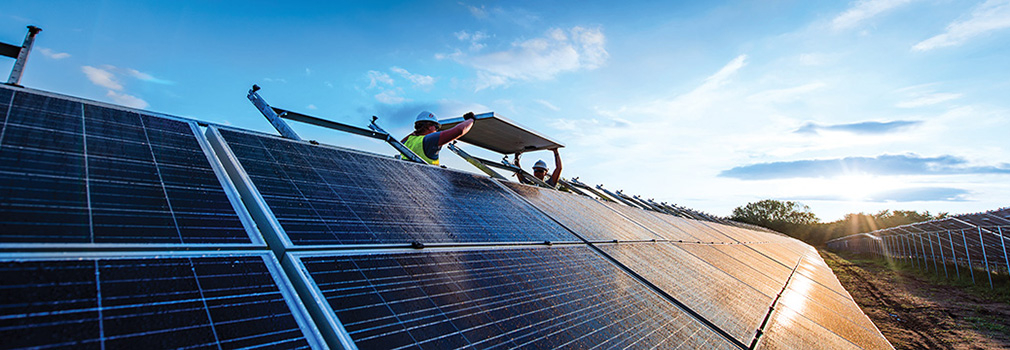On pace for a carbon-free future and celebrating clean energy progress

This week, the American Clean Power (ACP) association celebrates the many ways clean energy is building a better future for the United States. From well-paying jobs to providing landowners with extra income, and from critical tax revenue to emission-free power, clean energy is helping communities grow.
At Xcel Energy, leading the clean energy transition doesn’t happen by accident. It takes a track record of operational excellence, strong stakeholder engagement and a balanced, thoughtful approach to drive significant carbon reductions while ensuring reliability and affordability for customers.
By completing the Dakota Range Wind Farm in South Dakota earlier this year, Xcel Energy successfully completed the largest multi-state wind investment in the nation – adding 3,600 megawatts of new company-owned wind projects since 2017, enough to power nearly 1.8 million average homes annually. Xcel Energy now has more than 11,000 megawatts of wind capacity on its system and is among a handful of companies to exceed the 10,000-megawatt threshold.
“Wind energy drives both economic and environmental benefits for our customers,” said Frank Prager, senior vice president and chief sustainability officer. “We’ve proven that we can effectively build and operate wind farms as part of our Steel for Fuel growth strategy, and we estimate our wind farms generated approximately $1.8 billion in fuel-cost savings for customers over the past five years. In addition, wind farms provide a strong tax base, along with both construction and permanent jobs, and landowner lease payments help drive the economy in rural communities.”
Here are a few other facts about this wind-energy accomplishment, along with the $1.8 billion in customer savings:
- 14 wind farms installed from 2017 to 2022, including nine the company built itself.
- $1.2 billion in local economic benefits, including payments to property owners and property taxes that help fund local schools and emergency services.
- More than $500 million spent with diverse suppliers.
- More than 3,000 construction jobs created, along with nearly 160 permanent jobs.
Transitioning from fossil fuels to renewable energy sources like wind and solar has helped the company reduce carbon emissions 50% since 2005, and it remains on pace for an 80% reduction by the
end of the decade.
Specific plans to achieve that goal are moving forward in the states the company serves. The Minnesota Public Utilities Commission approved the company’s clean energy proposal for the Upper Midwest system earlier this year. It includes retiring all coal plants in the region by 2030, extending the use of the carbon-free Monticello Nuclear Generating Station to 2040 and adding approximately 5,800 megawatts of wind and solar power. Natural gas would continue to be used to back up renewables as new carbon-free technologies are developed.
Meanwhile in Colorado, the Public Utilities Commission has approved the company’s landmark clean energy proposal, which is estimated to reduce carbon emissions at least 85% by the end of the decade and retire all its coal plants in the state by January 2031. Continued expansion of wind and solar will mean about 80% of Colorado customers’ energy will come from renewables by 2030. In addition, the company has received approval for Colorado’s Power Pathway – a nearly $2 billion transmission investment to improve the state’s electric grid and deliver various proposed renewable energy projects to customers. Construction on the transmission lines and substations will begin in late 2025 and continue through 2027.
Achieving the company’s industry-leading vision to deliver 100% carbon-free electricity to its customers by 2050 will also require new clean energy technologies. In 2020, the company helped launch the Carbon-Free Technology Initiative, which advocates for federal policies to help ensure the commercial viability of affordable, carbon-free power technologies that are available 24/7. The Edison Electric Institute leads the effort, along with its members and environmental and technology partners.
Xcel Energy is pleased to join the ACP in celebrating its annual American Clean Power Week, dedicated to showcasing the clean energy technologies that are powering homes and businesses; creating well-paying jobs; investing in communities and reducing costs for consumers. For more information on clean energy, please see this Xcel Energy video.


